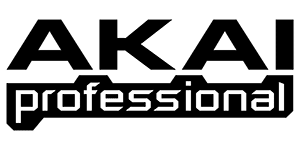In 2013 AKAI brand released the 2nd controller from the new MPC series called MPC Studio. Like the predecessor MPC Renaissance, it uses the same software, which is now managed with a more compact and portable controller. The housing of MPC Studio is made of ground aluminum and plastic.
The pads retained their velocity sensitivity, but became a bit harder. The device has 8 banks and a 64-note polyphony, and each pad shines with yellow, orange, green and red color to display the velocity level, events and other functions. It lacks some features from MPC Renaissance in favor of compactness and due to the price reduction. For example, 16 "Q-links" knobs were replaced with just 4 ones, and LEDs disappeared as well.
The built-in display shows the libraries, involved sequences, and the pad assignments, but it has a drawback, which is a “fixed screen”. It is impossible to read the information in a certain position, except for viewing straight onto it from the top. Another disadvantage is the lack of a global volume control.
AKAI worked well on the hardware of MPC Studio, which provides a competent balance between functionality and compactness. The layout of the panel facilitates a fast workflow, and there we say thanks to the MPC series. The rear panel of the MPC Studio offers a small number of connectors: USB to your computer, and MIDI In/Out. The workflow is very similar to MPC Renaissance: recording loops, editing/cutting samples, adding filters and effects, turning patterns into songs and exporting. Quantization and sequencer remained unchanged.
AKAI software features 12 main user points. "Main" is the main mode. It is designed to change the loop length, select the type of track (Drum, MIDI) and to assign "real time/edit" functions to "Q-Links". Here you can also find the settings for quantization, swing, time shift. The "Program Edit" button is responsible for the functions pitch change and sample layering (up to 4 samples per pad), changing the speed range, and selecting from 29 versatile filter modes, including the low-pass filter from MPC3000.
You can also add 4 effects to each program and use "Keygroups" to display the samples in a chromatic form through 4 layers, and in the 88-note range, which is great for sampling a piano, rhodes or synth. "Program Mixer" allows you to control the panning, volume and effects, and "Track Mixer" does the same job, but for each of the 128 tracks in a sequence. In addition, sequences are edited in the "Track View", in the "Next Sequence" you can make sequences that will respond to the pad pressing, and finally, "Sample Edit/Sample Record" provides the user with wide sampling capabilities.







